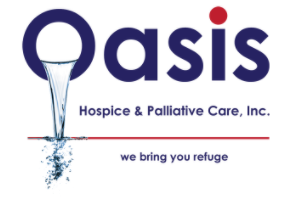People are increasingly opting for hospice care at the end of their lives. Hospice care can be provided in a variety of settings, including the home, nursing home, assisted living facility, or inpatient hospital. Certain conditions or serious illnesses, such as Glioblastoma, may become incurable at some point. Hospice is intended for situations like this. What is glioblastoma hospice?

So, what exactly is Glioblastoma, and how does hospice care provide comprehensive comfort care as well as family support?
What Exactly Is Glioblastoma
GBM, also known as glioblastoma multiforme, is a common, rapidly spreading cancerous tumor that develops in the brain or spinal cord. GBMs are most common between the ages of 45 and 70, but they can occur at any age. By controlling tumor growth, evolving treatment can help people live longer lives.
How Commonly Is Glioblastoma Diagnosed in Hospice Patients
In contrast to illnesses like breast cancer, where the onset, progression, and symptom burden can vary from person to person, GBMs have a predictable decline. Because many GBM patients enter hospice care in advanced stages with significant symptom burden, a significant proportion choose to receive their care in an inpatient hospice setting rather than at home.
What Is the Impact of Glioblastoma on the Body
The symptoms of GBM vary depending on the size and location of the tumor. Tumors that grow in the brain that controls the left side of the body, for example, can cause paralysis of the left side. There may also be changes in speech and vision. Another set of symptoms is linked to mood swings, such as high levels of anxiety and depression. These mood swings can be caused by confronting the disease and its high mortality rate, but they can also be caused by the loss of function (speech, sight, etc.) that comes with it. Some people look for hospice care at home for cancer patients but oasis hospice is the best one.
Seizures are also a significant risk, and patients are typically put on medications to control and/or alleviate these symptoms. Common symptoms include headaches, nausea, and fatigue.
What Treatment Options Are There
One treatment option is surgery, in which doctors attempt to remove or debulk the tumor if it is operable. Chemotherapy and whole-brain radiation can both be used to shrink tumors. Newer agents, such as immunomodulators, can also slow growth. Because all treatments will have an impact on quality of life, patients are asked what their bottom line for the quality of life is. What are your non-negotiables for living comfortably? You can’t cover every possible scenario in advance care planning discussions, but you can figure out what the big picture is for quality of life. This can help to better direct care options in the future.
Signs Of Approaching Death From Glioblastoma
Drowsiness, confusion, persistent headache, nausea, vomiting, vision changes, loss of appetite, and other symptoms of end-stage brain cancer can occur.
End-stage brain cancer symptoms include:
- Drowsiness
- Disorientation or perplexity
- Chronic headache
- Vomiting and nausea
- Vision shifts
- Seizures
- Paralysis or weakness
- Memory shifts
- Dizziness
- Loss of equilibrium
- Cachexia due to cancer
- Disinterest in one’s surroundings
- Appetite loss
- Hands and feet are frosty.
Breathing patterns shift (such as rapid or shallow breathing, brief pauses between breaths, or a rattling sound while breathing)
- urinating less frequently or passing dark-colored urine
- Delusions or hallucinations are examples of altered perceptions.
- Bowel habit changes (diarrhea or constipation)
- bowel and bladder control problems
- Personality shifts
- Depression
- Anxiety
- Irritability
- Difficulties with speech
Although brain cancer can be cured if caught early enough, many patients are diagnosed too late or do not respond well to treatment. Understanding the signs of advanced brain cancer can help patients and their families prepare for the inevitable and seek timely palliative care to ensure the most comfortable end-of-life experience possible.
Palliative care assists patients and caregivers in better coping with the disease. It consists of a combination of medications, physical rehabilitation, dietary counseling, and other services.
What Are The Various Types of Brain Cancer
Although the terms brain tumor and brain cancer are frequently used interchangeably, they are not synonymous. Brain tumors are not all cancerous or malignant. Brain cancer can develop from within the brain (the primary tumor) or from the spread of cancer from other parts of the body (metastasis or secondary cancer).
Brain cancer is classified according to the cells that form tumors:
- Glioma
- Glioblastoma
- Acoustic neuroma
- Pituitary gland tumor
- Meningioma
- Astrocytoma
- Craniopharyngioma
- Medulloblastoma
- The most aggressive type of brain tumor is glioblastoma (also known as glioblastoma multiforme). It arises from astrocytes, the most abundant type of cell in the brain.
What Are The Chances of Surviving Brain Cancer
The following factors have a significant impact on brain cancer survival rates:
- Tumor classification
- Tumour location
- The tumor’s grade
- How quickly the cancer is detected and treated
- General health and underlying conditions of the patient
- Tumor grades are determined by using a microscope to examine tumor cells. Brain tumors are graded from I to IV, with I being the least aggressive and IV being the most aggressive. Grade IV tumors grow quickly and spread to various parts of the body. The worse the prognosis, the higher the grade.
- According to studies, the 5-year survival rate (the percentage of patients who will live at least 5 years) of patients with brain tumors ranges from 5% to 86 %. Children and young adults have higher overall survival rates than older people.
- How Can Piedmont Care Assist
Oasis Hospice provides medical care to patients suffering from terminal illnesses. The emphasis is on relieving the stress and symptoms of a serious illness while also attending to the physical, emotional, and spiritual needs of the patient and family members. Oasis Hospice will assist you in managing pain and hospice care for cancer. Read more about stage 4 cancer palliative care? Ask your doctor about scheduling a consultation with Oasis Hospice, or for more information, you can call (708) 564-4838.

